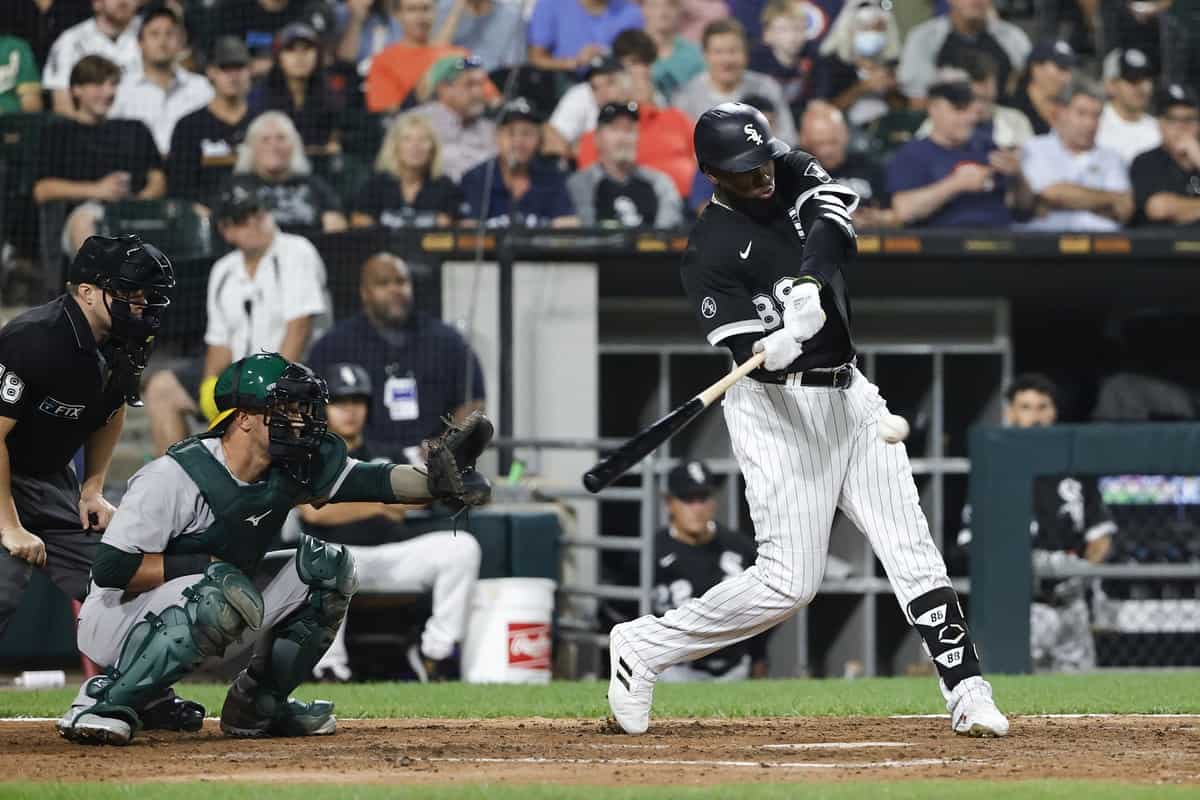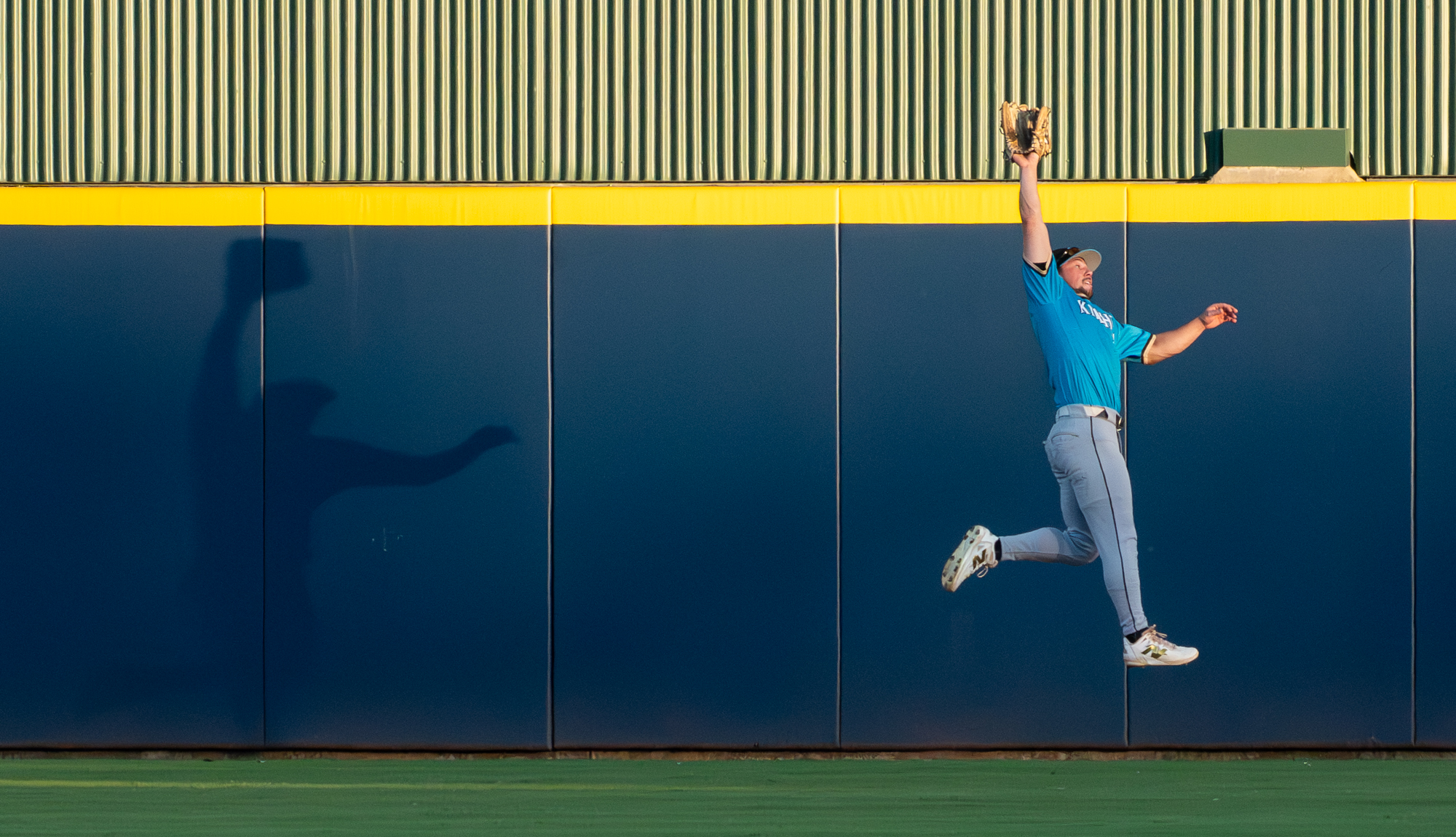It's normally a welcome sight when Dan Szymborski posts the White Sox's ZiPS projections for the upcoming season at FanGraphs. I'd normally be even more appreciative if he put the White Sox first in line like he did this time around.
But with a lockout looming, a post about the White Sox's ZiPS projections would've been great fodder for one to three days in the middle of a winter transactions freeze. Instead, he went ahead and dropped the Sox's 2022 numbers in the same news window that José Quintana signed with the Pittsburgh Pirates for $2 million.
The projections themselves are a similar mix of positive developments and troublesome gaps. Here's the annual diamond overlay of how the White Sox project when adjusted for the FanGraphs playing-time estimations.
A sneak peek at the White Sox ZiPS depth chart, the full projections which will go live on Monday. #ZiPS22 pic.twitter.com/rOR4B3bKa8
— Dan Szymborski (@DSzymborski) November 22, 2021
The scale meets expectations, with right field and second base in the roughest shape, while everything else at the 26-man level is acceptable or better. The floor is higher than it was last year when comparing the maps from 2021 to 2022.
But as the White Sox aim for consecutive division titles for the first time in franchise history, the stakes make everything count a little more. Projections don't automatically make for great predictions, but they can inform our discussions as we figure out where the White Sox are trying to apply their resources.
Below are the things that jump out to me, for better or worse.
GOOD NEWS
Luis Robert has growth to go: Robert's hyperaggressive profile, off-the-charts speed and on-the-charts injury history creates a profile that's difficult for algorithms to properly account. Or maybe they do properly account for it, but the result isn't what you want to see.
Though Robert missed more than half the season with a hip flexor tear, he's still managing to bolster gains, at least when adjusted for playing time.
- 2021 projected: .264/.312/.482 over 580 PA, 3.3 WAR
- 2021 actual: .338/.378/.567 over 296 PA, 3.2 WAR
- 2022 projected: .279/.330/.492 over 500 PA, 3.2 WAR
Give him the playing time that FanGraphs' depth charts envision, and that's how he gets to the 4.2 WAR figure in the above chart. That's where you want to see him. It might be slightly disappointing, as we know from his 2021 season that could've found his way to a 6 WAR season had his map not lost a big chunk of the middle. Take into account the inherently conservative nature of projections, and any time a player projects to 4 WAR despite a below-average walk rate and less-than-impeccable availability, that guy is in great shape.
Dallas Keuchel may not be a crisis: One of the curses of a rock-solid five-man rotation is that it's easy to lose sight of how bad the typical fourth and fifth starters can be. There's a brand of pitching that can be described both as "below average" and "entirely acceptable," and it's only appreciated after that pitcher disappears and worse pitchers falter under the same workload. If he stands a decent chance of delivering five decent innings every five days, he'll be up to the task at hand.
Keuchel occupies that gray zone. An ordinary starter isn't the most satisfying use of $18 million, but if Keuchel has the kind of season ZiPS foresees -- a 4.46 ERA and a 1.8 WAR over 145 innings -- that'll help the White Sox, especially since the innings total will come up short of the 160 needed for his $20 million club option to automatically vest.
PERTINENT: Three pitchers to think about when thinking about Dallas Keuchel
Jake Burger, sixth-best projection: After all the injuries and strain he's battled over his pro career, appearing in a major-league game would've registered as a major triumph. Because 2021 was a charmed season for most of the White Sox's part-timers, Burger translated a moral victory into actual victories by producing during his cup of coffee, with the White Sox cutting it short as they saw the league figuring him out.
Throw in his strong showing at Triple-A, and now ZiPS has actual data to process. It likes what it sees:
- 2021 projected: .226/.301/.354
- 2021 actual: .263/.333/.474 over 42 PA (,274/.332/.513 over 340 PA in Triple-A)
- 2022 projected: .252/.325/.419, 1.7 WAR
That kind of projection makes him very welcome depth over the course of a long season. That kind of projection could also make him attractive to other teams that have more playing time available earlier.
BAD NEWS
Jake Burger, sixth-best projection: The one thing I didn't mention with Burger's 1.7 WAR is that ZiPS sees him getting there over 540 plate appearances, which seems bullish considering Burger has only amassed 599 plate appearances in five professional seasons.
Still, even adjusting for the peculiarities generated by Burger's most unusual career, it's concerning that he still slips ahead of Eloy Jiménez (1.6 WAR), Adam Engel (1.2 WAR) and Andrew Vaughn (1.1 WAR) despite fuller seasons and higher hopes. Burger is also leading all the in-house second base options:
- Danny Mendick, 1.1 WAR, .234/.309/.352 over 447 PA
- Romy González, 0.9 WAR, .222/.277/.394 over 448 PA
- Yolbert Sánchez, 0.7 WAR, .276/.304/.371 over 415 PA
- Jose Rodriguez, 0.6 WAR, .261/.285/.409 over 543 PA
(Sánchez's No. 1 comp is Chris Getz, so be on the lookout for preferential treatment, as managers often like employees who remind them of themselves.)
Delicate corners: Speaking of Jiménez, Engel and Vaughn, the White Sox still haven't been able to find escape velocity from pedestrian-at-best projections in the outfield positions flanking Robert. The Sox are in better shape than when Nomar Mazara required accounting, but even the presence of four playable options over two corners can't create an average projection in either left or right field.
There's legitimate reason to believe all of the players involved can beat their projections ...
- Eloy Jiménez: .276/.319/.510
- Adam Engel: .240/.295/.407
- Andrew Vaughn: .245/.325/.429
- Gavin Sheets: .256/.311/.459
... but there are also reasons why the combination of that offense, defense and playing time projections all leave them short of typical starter production. One would've hoped the White Sox could've made it simpler by now.
The second-best catcher isn't on the roster: Once again, the projected WAR for catchers in the above graphic is a lower number than Yasmani Grandal's estimated contribution.
- 2021: Grandal 3.6 WAR; Catchers 3.2 WAR
- 2022: Grandal 3.9 WAR; 3.6 WAR
Either situation is in fine shape, but what's different this year is the ZiPS favorite for the backup job isn't on the 40-man roster. Carlos Pérez gets projected for a 1.3 WAR over 442 plate appearances. That's superior to what Zack Collins (0.1 WAR) and Seby Zavala (-0.6) get over their 340ish plate appearances.
Further scrutiny of Pérez's numbers should knock him down to the rest of the pile. A line of .232/.270/.374 feels legit in the first two columns, but heavy in slugging considering he'd struggled to convincingly clear a .100 ISO before last season. His WAR total is also bolstered by an aggressive accounting of his defense. At 10 runs above average, it reflects his fine blocking and throwing, but what we know of his receiving leaves a lot to be desired.
I don't see a whole lot of daylight between Pérez, Zavala and Collins, and the White Sox would be advised to find a catcher more playable than any of them. Pérez's projection merits attention mostly because he was probably the most notable player left off the 40-man roster and thus unprotected for the Rule 5 draft, and with a weak market for catchers in free agency, I'm wondering if any team values Pérez in a similar fashion.
PERTINENT: White Sox add Bennett Sousa, Jason Bilous to 40-man roster at Rule 5 deadline
IN BETWEEN
Yoán Moncada, perpetually 3 WAR: After his breakout 2019 season, ZiPS projected Yoán Moncada for a relatively bearish 3.6 WAR. Thanks to COVID-19 in 2020 and an uneven performance at the plate this past season, he's taking different routes to the same destination.
- 2021 projected: .261/.333/.459, 3.1 WAR over 609 PA
- 2021 actual: ,263/.375/.412, 4.5 WAR over 616 PA
- 2022 projected: .260/.346/.440, 3.2 WAR over 622 PA
ZiPS projected a .792 OPS when Moncada ended up at .787, but because 40 points of OBP is more valuable than 40 points of slugging, he came out ahead in terms of WAR. The question is whether the walk rate is here to stay. Whether the strikeout rate will again vacillate upward. Whether he'll regain the ability to turn around fastballs at damaging speeds. There are a lot of questions, and they're all fundamental to assessing the kind of hitter Moncada actually is,
Lucas Giolito, downgraded to great: The 2021 preseason projections had him winning the Cy Young. Instead he settled for an 11th-place finish. The mania has diminished in a corresponding fashion, dropping from a 5.6 WAR projection for 2022 to a 4.4 WAR afterward. That still makes him the best player on the White Sox, at least until Robert finally completes that map.
(Photo by Kamil Krzaczynski/USA TODAY Sports)





